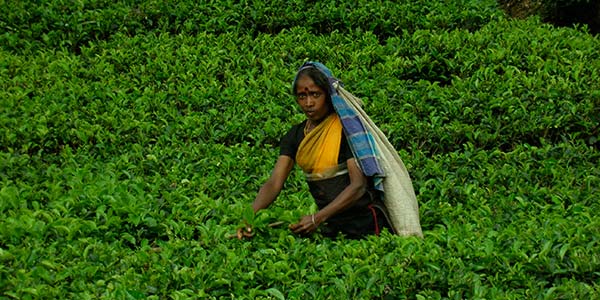Do you know where your food comes from? It’s a question that gets tossed around a lot—often to emphasize the importance of buying from organic farmers. What’s rarely discussed, however, is the regional origin of any given crop on those farms. (Hint: It’s usually not North America)
An NPR article entitled “A Map Of Where Your Food Originated May Surprise You” opens with a reminder that, although tomatoes are prominent in much of Italy’s cuisine, they actually originated in South America. The same is true of Thailand’s chilies. And Ireland’s potatoes? Not from Ireland.
According to a new study, more than two-thirds of the crops that underpin national diets originated somewhere else—a trend that has accelerated over the past 50 years. The study’s lead researcher, Colin Khoury, plant scientist at the International Center for Tropical Agriculture and U.S. Department of Agriculture, provided the following comment to NPR’s The Salt: “The numbers affirm what we have long known—that our entire food system is completely global.”
Khoury goes on to mention that cultures adopt foreign crops very quickly after coming into contact with them. He points out that just 16 years after potatoes were discovered in the Andes, Europe was growing them.
To understand why all of this matters, it is important to look at the groundbreaking work of the great Russian plant explorer Nikolai Vavilov. On a quest to end famine, Vavilov traveled the world from 1916 to 1940. He visited 64 countries on five continents, collecting over 220,000 seeds, tubers and fruits.
As NPR reports, Vavilov formulated the idea that crop plants have centers of origin, where they were originally domesticated. He reasoned that the region where a crop had been domesticated would be marked by the greatest diversity of that crop, because farmers there would have been selecting different types for the longest time. Diversity, along with the presence of that crop’s wild relatives, marked the center of origin. And some parts of the world are more fertile than others.
(Curious about where today’s common crops originated? Check out this interactive map.)
We know now that the genes needed to combat the future threats of climate change, diseases and pests are most likely to be found in a crop’s primary region of diversity. Yet, they will be needed wherever crops are grown. This is why the International Treaty on Plant Genetic Resources for Food and Agriculture (also known as the Seed Treaty) was negotiated in 2006. It ensures that countries have access to the plant diversity needed for their breeders to develop new varieties.
The challenge? As NPR reports, most countries are not providing the “facilitated access” promised by the treaty. This doesn’t jibe with Khoury’s findings: “Now we know just how much national diets and agriculture systems everywhere depend on crops that originated in other parts of the world.”
Clearly it’s time for politics to give way to a simple truth: We’re all in this together.

